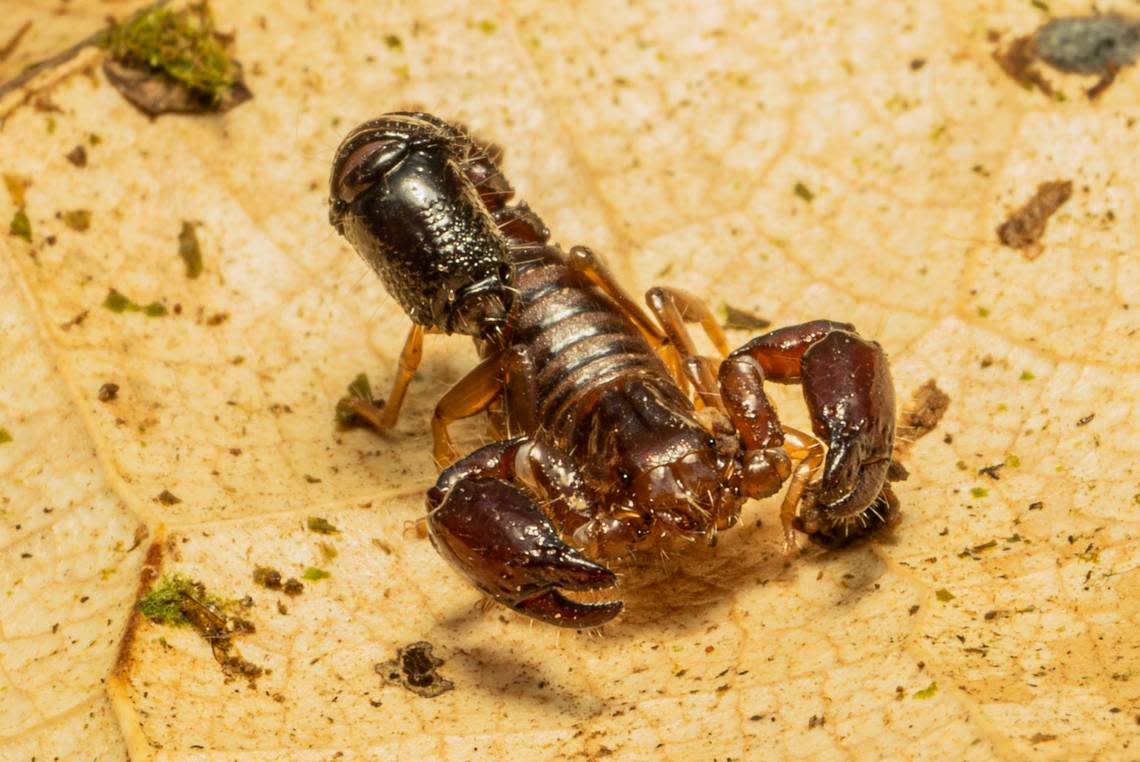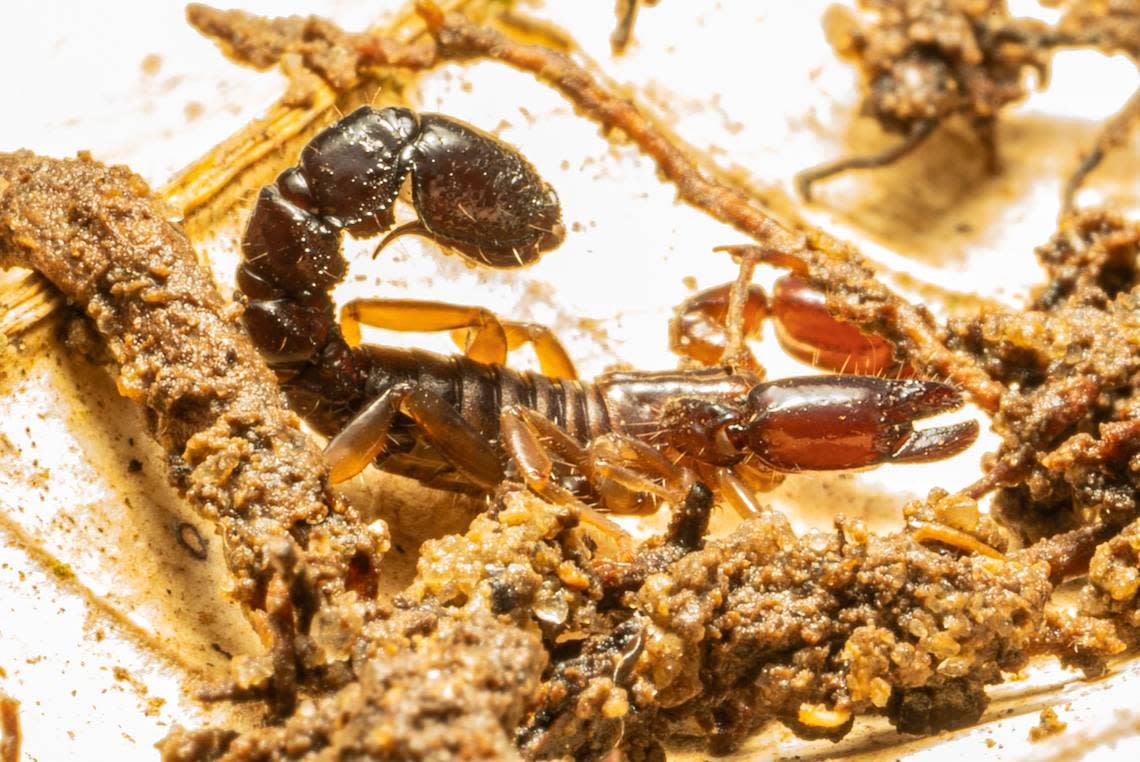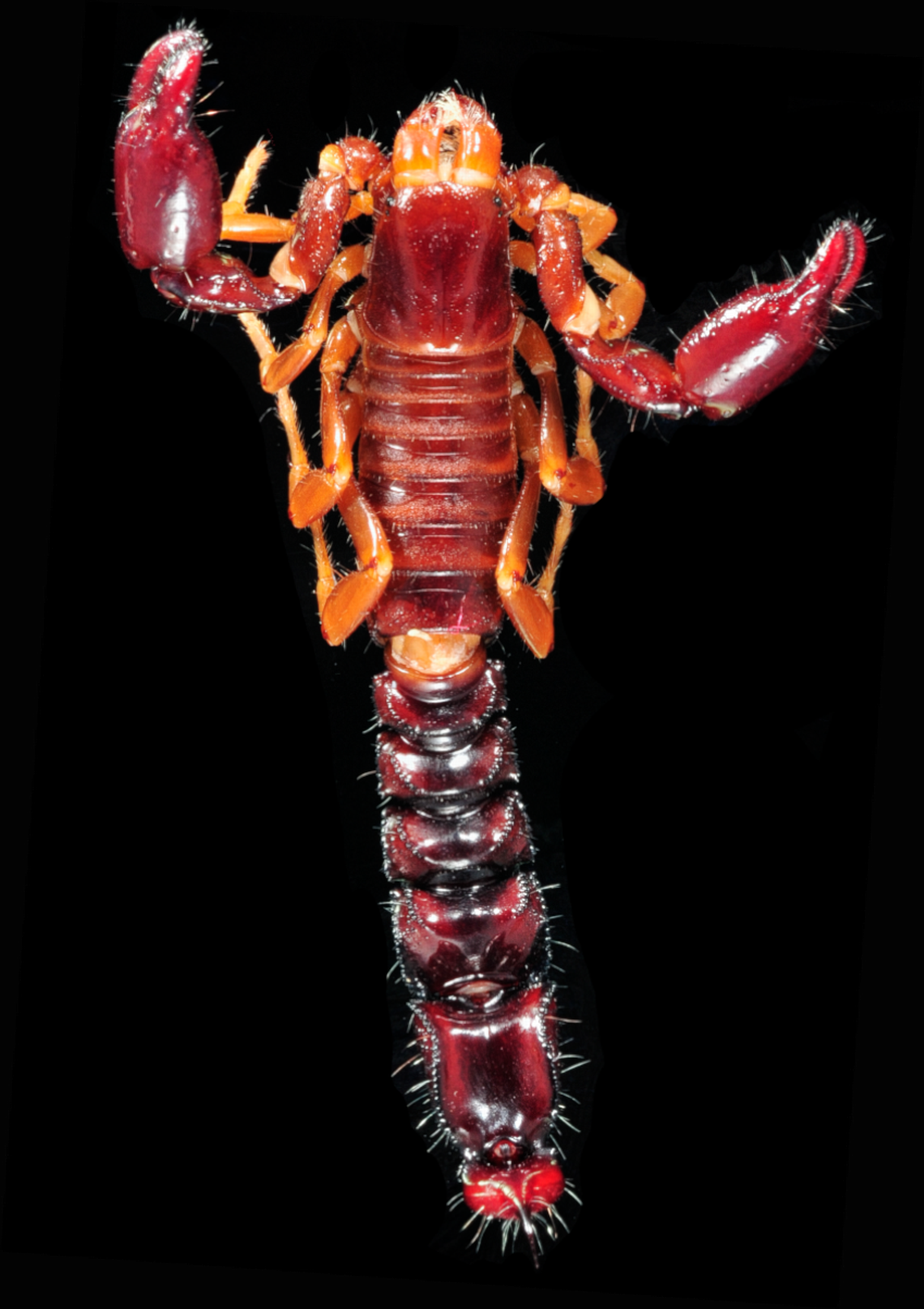Partly blind creature — with ‘powerful sting’ — found in Colombia. It’s a new species
Buried in the leaves covering the floor of the Amazon rainforest, a partially blind creature with a “powerful sting” went about its way. Until its surroundings began to churn.
A scientist was sifting through the leaves — only to be met by the stinging animal’s defense mechanism.
It turned out to be a new species.
David Luna-Sarmiento ventured into the rainforest of southern Colombia on a series of nighttime wildlife surveys in 2022, according to a study published April 12 in the peer-reviewed journal American Museum Novitates.
Equipped with a UV light, Luna-Sarmiento sorted through the leaves and watched for the telltale glow of a scorpion, the study said. He found eight unfamiliar-looking scorpions — one of which stung his thumb.
The scorpion’s “powerful sting” left Luna-Sarmiento in “intense pain” for about 30 minutes, the American Museum of Natural History wrote in an April 12 blog post.
Later, researchers took a closer look at the scorpions and realized they’d discovered a new species: Troglotayosicus akaido, or the akaido scorpion.

Discover more new species
Thousands of new species are found each year. Here are three of our most eye-catching stories from the past week.
→Volcanic ocean creature — with 'long' legs — discovered in Japan. It's a new species
→'Flat'-headed creature — with multicolored eyes — discovered as new species in China
→Nocturnal creature — a 'rapidly-running' predator — discovered as new species in India
Akaido scorpions can reach about three-fourths of an inch in length the study said. They have reddish, slightly hairy bodies and fewer eyes than scorpion’s normally have.
“This species is almost blind,” Jairo Moreno-González, one of the study co-authors, told the museum. “Loss of eyes is common among scorpions living in caves, but it’s unusual for blindness to have evolved in other habitats,” such as the Amazon rainforest.
Photos show some Akaido scorpions with their stingers curled above their bodies.

Co-author Lorenzo Prendini told McClatchy News that “it’s not uncommon to be stung while collecting scorpions” by hand. Consequently, researchers typically use forceps to collect scorpions.
The new species “tends to escape and is not aggressive,” co-author Moreno-González told McClatchy News. Its initial sting was likely an accident.

Researchers said they named the new species after the indigenous Huitoto Murui language’s word for scorpion, “akaido,” because the Murui people live near the site where the new species was discovered.
So far, the new species has only been found in the Amazonas region of Colombia near the border with Peru, the study said. This area is about 450 miles southeast of Bogotá.
The new species was identified by its eyes, body shape, appendages, coloring, habitat and other subtle physical features, the study said.
The research team included Jairo Moreno-González, David Luna-Sarmiento and Lorenzo Prendini.
Sea creature — with 170 eyes — found lurking under rock in China. It’s a new species
‘Warrior’ creature — with ‘dark mark’ — found as new species in Brazil river. See it
Clawed creature falls from tree and lands on scientist in Thailand. It’s a new species
